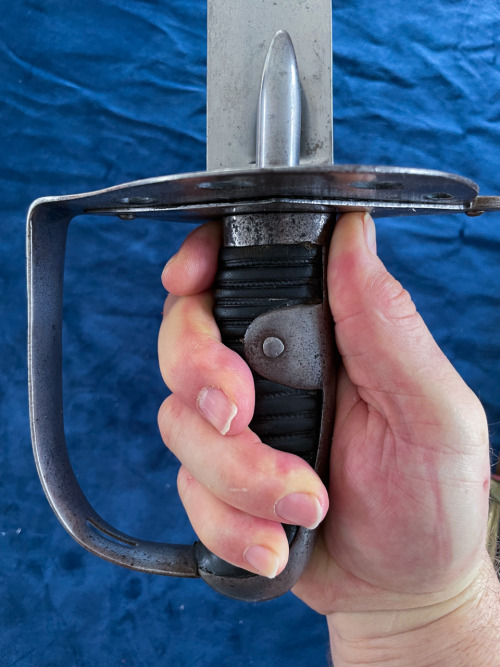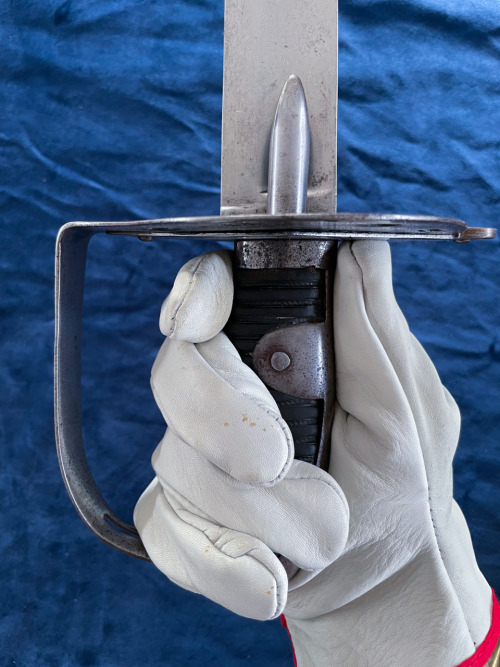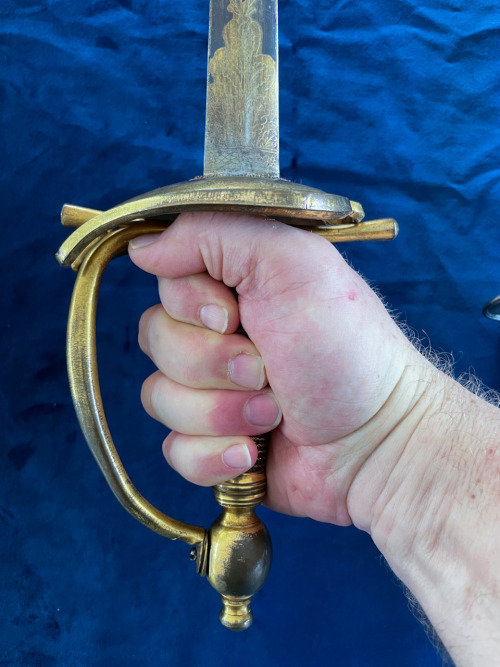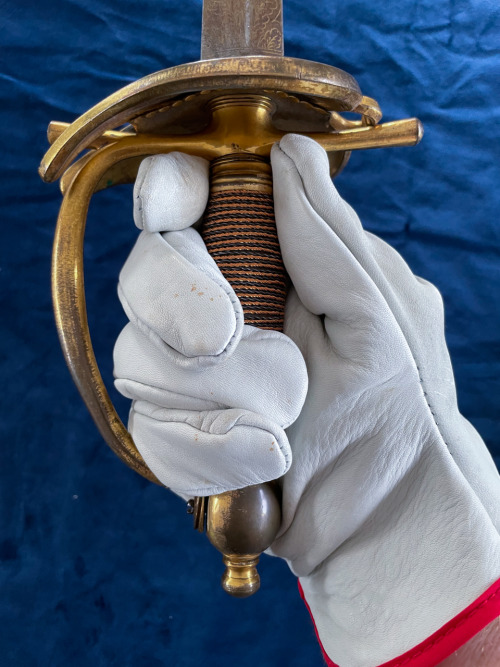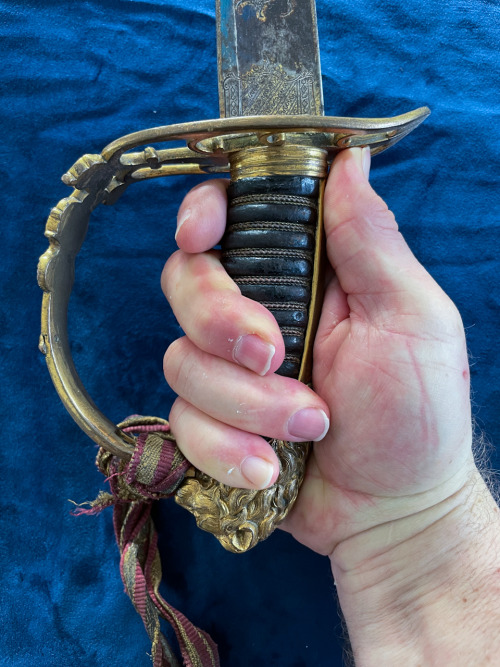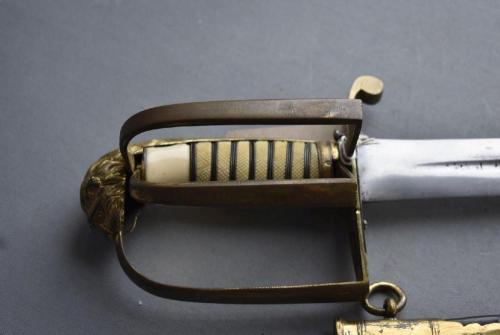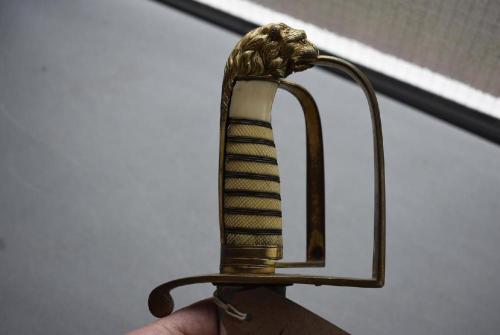#spadroon
In the vein of @victoriansword post showing different grips for holding swords above are some photos I took of other British Georgian era swords for comparison.
They are, top to bottom:
1. 1796 Pattern Heavy Cavalry troopers sword
2. 1796 Pattern Heavy Cavalry officers dismounted service sword (with the boat-shell guard).
3. 1803 Pattern Light Company officers sabre.
Out of interest I tried the grips while wearing leather gloves, my rational being that it was likely that these would have been worn most of the times that the swords were used. I don’t have large hands, the gloves are a medium size I purchased from a hardware store. They’re a good fit, but I found that with the 1803 they took up a lot of the space inside the guard.
My personal impression, is that the 1803 favoured the hammer grip as it is mostly a cutting sword. The thumb up the back was good for the 1796 HC officers sword and the 1796 HC trooper when giving point. That said I wouldn’t be surprised if they changed to a hammer grip on the trooper sword once they got into melee.
I will follow this post up with a similar one for three French swords.
Post link
Georgian officers sword with rotating guard or ‘attack hilt’
The rotating guard is an interesting but short lived attempt at solving an issue officers faced when carrying their swords.
As a symbol of authority and a sidearm, most swords spent the majority of their service life in their scabbards at the officer’s side. Even when on active duty, the majority of an army’s time is spent garrisoned or on the move rather than in actual combat. So officers were drawn to swords that were as un-intrusive as possible. But doing so the sacrificed performance, by taking a lighter blade or a less protective hilt.
More commonly seen on French sabres, the rotating guard hoped to solve the issue of hand protection by having the side bars swivel out when in use and rotate forward so when not, so that it had a flatter, less obtrusive profile when sheathed.
In French service this style of hilt only lasted from 1784 to 1798 and presumably for a similar time in British service. In part because this is around the time that nations began introducing their own standard patterns or models and also because the design introduces an inherent weakness in the guard reducing its’ effectiveness.
The idea did however persist into the early 19th Century with the Austrian army who even used it in one of their standard models.
Images are sourced from Antony Cribb Auctions.




Post link


